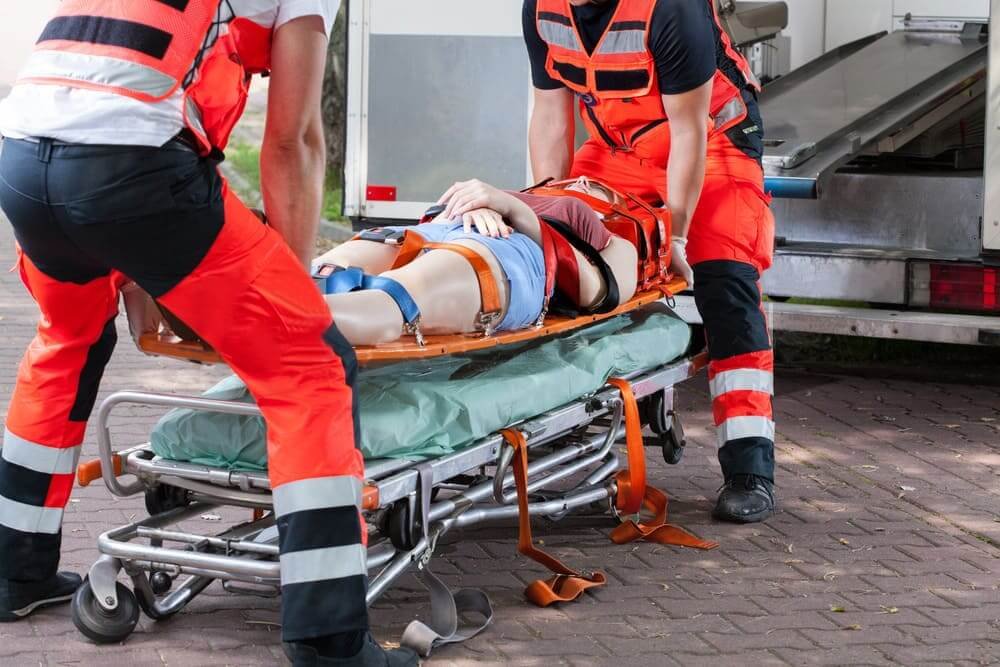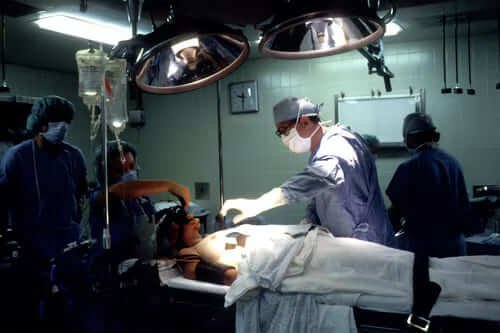Wheeled stretchers are vital medical equipment. Paramedics always carry them to emergency scenes. EMS personnel, search and rescue teams, and the military finds them a necessity too.
But you need some training to use a wheeled stretcher as most of them are complex..
You’ll likely use a wheeled stretcher to respond to emergencies outside a hospital. You also need it to transport wounded patients and move bodies to the morgue.
Let’s dig deeper into why you would use a wheeled stretcher.
Table of Contents
Toggle1 – When You Need To Respond To An Outdoor Emergency
Most emergency calls are about an injured person who can’t walk or sit. They could have injured their limbs or spine. Some could even be unconscious or dead.
Whatever the case, you’ll need to move the patient to a hospital for specialized care. A wheeled stretcher comes in handy. You can use it when you need to:
- Carry injured people
- Carry dead bodies
To Carry Injured People
Most stretchers used by EMS professionals have wheels at the base. The wheels make it easier to move patients on paved surfaces.
Without a wheeled stretcher, you’d need to lift and carry the patient. Such a task can be challenging, especially if your patient is overweight. The picture below illustrates one such case:

Apart from the wheels, wheeled stretchers also come with straps to help you secure the patient on the cot. Their spring latches and stretcher locks help you guide its movement.
Additionally, many modern wheeled stretchers come with adjustable parts to ensure patient comfort.
You can adjust the stretcher when you need to:
- Lower or raise the bed to make it easier to transfer the patient to another stretcher or hospital bed.
- Raise its head to allow the patient to stay in a sitting position. This feature is useful when moving patients with respiratory conditions.
- Make the bed flat to perform CPR or transport a patient with spinal injuries.
- Raise the leg region when moving a patient in shock.
Some modern stretchers even come with hydraulics and a motor. The added features make the work easier as you won’t need to use too much energy. Just press a few buttons to shift the patient’s position and move the entire set-up.
To Carry Dead Bodies
Sometimes paramedics may get to the emergency scene after the patient has passed on. In such a situation, wait for the police to arrive at the scene. The authorities will then give you the go-ahead to carry the body away.
A dead body lacks tone and moves wherever gravity pulls it. Moreover, it’s unable to hold itself through the interaction of bones and muscles, making it feel a lot heavier than a live body.
A wheeled stretcher is a valuable tool since it’ll shield you from the strain of carrying the weight. But ensure you strap it well to the stretcher to prevent any movements.
2 – When You Need To Transport A Patient To A Hospital Or Move Them Between Hospital Departments
Medics often find it necessary to move patients around the hospital. For instance, if you want to examine a patient’s recovery, you’ll need to move them to the radiology department.
Similarly, if the surgeon wants a CT scan, you’ll have to wheel the patient to the machine.
A stretcher’s design will determine how you use it. Each wheeled stretcher is designed for specific hospital use. Some of the popular categories include:
- Emergency trolleys
- Trauma stretchers
- Ophthalmological stretchers
Emergency Trolleys
Emergency stretchers are the most common in the group and will likely come to mind whenever someone mentions a wheeled stretcher.
Medics use them both in hospital and outside hospital settings.
Similarly, you can use emergency trolleys to move patients within a hospital. For instance, you can use it to move a patient from the wards to the radiology department.
Paramedics use emergency trolleys to move patients from an accident scene to an ambulance, as shown below:

For instance, you can use it to move a patient from the wards to the radiology department.
Paramedics use emergency trolleys to move patients from an accident scene to an ambulance. They also wheel patients from an ambulance to a hospital.
Wheeled stretchers are adjustable. That’s why paramedics can place a patient into an ambulance without changing stretchers.
In out-of-hospital settings, paramedics use wheeled stretchers only on even surfaces.
Uneven surfaces make it challenging to push the stretcher. They could also cause discomfort to the patient. On such surfaces, paramedics must fold the stretcher and carry the patient.
Trauma Stretchers
As the name suggests, trauma stretchers are designed for patients with trauma.
They have several tools to make it easier to perform their specialized function. For example, wheeled trauma stretchers for the radiology department come with:
- Radio-translucent mattress
- C-arm and X-ray compatible parts
- Storage for oxygen cylinder
- Provision for IV drip rod
Ophthalmological Stretchers
These stretchers allow a surgeon to access the patient during surgery.
They have enhanced positioning and head-end clearance capabilities. These enable the surgeon to execute delicate procedures without moving the patient.
Some ophthalmological stretchers have retractable headrests to allow surgical procedures in various settings.
The picture below shows an ophthalmological wheeled stretcher in use:

Conclusion
You can use wheeled stretchers both inside hospitals and outside. In hospitals, you need them to move patients from one area to the next. An emergency stretcher is the main wheeled stretcher used outside hospitals.
Frequently Asked Questions
How many types of wheeled stretchers are there?
Wheeled stretchers come in many forms and designs. These stretchers fall under five categories. These include emergency stretchers, trauma gurneys, mortuary stretchers, infant cots, and ophthalmological stretchers.
You use them inside hospitals to move patients around. You can also use the emergency stretcher outside hospitals.
What are emergency wheeled stretchers used for?
Emergency stretchers are used to move patients, especially those who can’t move independently. They’re used by:
- EMS personnel
- Search and rescue professionals
- The military.
Is a wheeled gurney a medical device?
Yes.
A wheeled stretcher is a medical device because medics use it. Similarly, paramedics use it alongside other medical equipment to provide emergency services.



